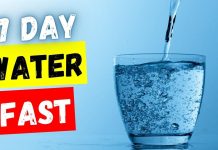The Benefits of Retin-A
Welcome to our comprehensive guide on the benefits of Retin-A. In this article, we will explore the numerous advantages of using Retin-A, a topical medication that has gained immense popularity in the field of skincare. With its remarkable properties and proven effectiveness, Retin-A has become a go-to solution for individuals seeking to improve the overall health and appearance of their skin.
Understanding Retin-A
Retin-A, also known as tretinoin, is a derivative of vitamin A that is primarily used for treating acne and reducing the appearance of wrinkles, fine lines, and other signs of aging. It belongs to a class of medications called retinoids, which are known for their ability to enhance cell turnover and promote collagen production.
The Benefits of Retin-A
Acne Treatment
One of the primary benefits of Retin-A is its effectiveness in treating acne. The medication works by unclogging pores, preventing the formation of new pimples, and reducing inflammation. It also helps to fade acne scars and improve skin texture, resulting in a clearer and smoother complexion.
Wrinkle Reduction
Retin-A is widely recognized for its anti-aging properties. Regular use of Retin-A stimulates collagen production, which helps to reduce the appearance of wrinkles and fine lines. It also improves skin elasticity, making it firmer and more youthful in appearance.
Hyperpigmentation Treatment
Retin-A is effective in treating hyperpigmentation, such as age spots, sunspots, and melasma. It helps to lighten dark spots by inhibiting the production of melanin, the pigment responsible for skin color. With consistent use, Retin-A can help even out skin tone and improve overall complexion.
Skin Texture Improvement
Retin-A promotes cell turnover, which means that it helps to shed dead skin cells and encourage the growth of new, healthy cells. This process leads to improved skin texture, making it smoother, softer, and more even. It also helps to reduce the appearance of pores, giving the skin a refined and polished look.
Treatment of Skin Conditions
In addition to acne, Retin-A has shown effectiveness in treating other skin conditions such as rosacea and psoriasis. Its anti-inflammatory properties help to calm redness and reduce the severity of symptoms associated with these conditions.
How to Use Retin-A
When using Retin-A, it is important to follow a few guidelines to ensure optimal results and minimize potential side effects. Here are some key points to keep in mind:
Apply Retin-A to clean, dry skin in the evening.
Start with a pea-sized amount and gently massage it into the skin.
Avoid applying Retin-A near the eyes, mouth, and nostrils.
Always use sun protection during the day as Retin-A can increase skin sensitivity to the sun.
Gradually increase the frequency of use as tolerated by your skin.
Consult with a dermatologist for personalized guidance and recommendations.

Retin-A is a powerful topical medication that offers a wide range of benefits for the skin. From treating acne and reducing wrinkles to improving skin texture and treating hyperpigmentation, Retin-A has become a staple in skincare routines worldwide. By incorporating Retin-A into your skincare regimen and following proper usage guidelines, you can enjoy the remarkable advantages this medication has to offer. Remember, consistency and patience are key when it comes to achieving optimal results with Retin-A.
Frequently Asked Questions about the Benefits of Retin-A
1. What is Retin-A?
Retin-A is a topical medication that contains tretinoin, a derivative of vitamin A. It is primarily used for treating acne, but it also offers several other benefits for the skin.
2. How does Retin-A work?
Retin-A works by speeding up cell turnover, promoting the growth of new skin cells, and reducing the formation of comedones (blackheads and whiteheads). It also helps to improve collagen production, which can reduce the appearance of wrinkles and fine lines.
3. What are the main benefits of using Retin-A?
The main benefits of using Retin-A include reducing acne breakouts, improving skin texture and tone, diminishing the appearance of wrinkles and fine lines, and minimizing hyperpigmentation and sun damage.
4. Can Retin-A help with acne scars?
Yes, Retin-A can help fade acne scars over time by promoting the growth of new skin cells and improving collagen production. However, it may take several months of consistent use to see noticeable results.
5. Does Retin-A make the skin more sensitive to the sun?
Yes, Retin-A can make the skin more sensitive to the sun. It is important to use sunscreen with a high SPF during the day and avoid prolonged sun exposure while using Retin-A to prevent sunburn and further skin damage.
6. Can Retin-A be used for anti-aging purposes?
Yes, Retin-A is commonly used for its anti-aging benefits. It can help reduce the appearance of wrinkles, fine lines, and age spots, and improve overall skin texture and tone.
7. How long does it take to see results with Retin-A?
Results with Retin-A may vary, but most people start noticing improvements in their skin within 4 to 8 weeks of consistent use. However, it may take several months to see maximum benefits.
8. Can Retin-A be used by people with sensitive skin?
Retin-A can be harsh on sensitive skin, causing redness, dryness, and irritation. It is recommended to start with a lower concentration and gradually increase as tolerated. It is also advisable to consult a dermatologist for personalized advice.
9. Can Retin-A be used during pregnancy?
It is generally not recommended to use Retin-A during pregnancy as it may have potential risks for the fetus. It is best to consult with a healthcare professional for alternative skincare options during pregnancy.
10. Are there any side effects of using Retin-A?
Common side effects of Retin-A include dryness, redness, peeling, and increased sensitivity to the sun. These side effects are usually temporary and can be minimized by starting with a lower concentration and gradually increasing use over time.




